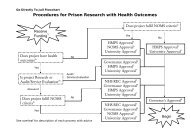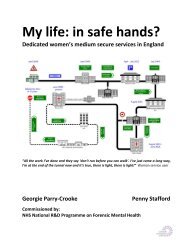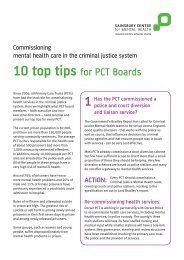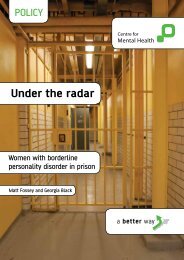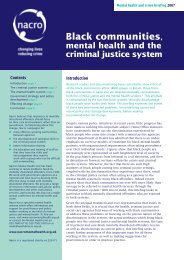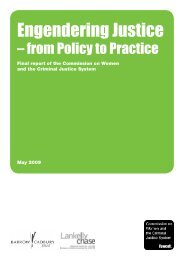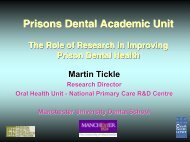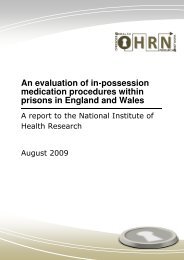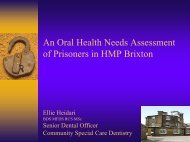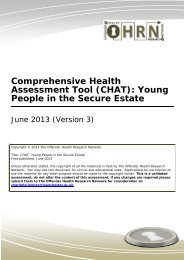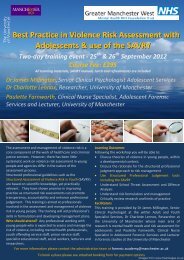Physical Control in Care Training Manual - Independent Advisory ...
Physical Control in Care Training Manual - Independent Advisory ...
Physical Control in Care Training Manual - Independent Advisory ...
Create successful ePaper yourself
Turn your PDF publications into a flip-book with our unique Google optimized e-Paper software.
PHYSICAL CONTROL IN CAREcomply with your <strong>in</strong>structions. Failure to respond to <strong>in</strong>structionsshould not be mistaken for deliberate non-compliance. It is valuableto listen to the person and attempt to understand why they arebehav<strong>in</strong>g as they are.Even though what the person says may appear strange, it is oftenpossible to understand, predict what they will do next and <strong>in</strong>teractwith them.Us<strong>in</strong>g restra<strong>in</strong>t on young people experienc<strong>in</strong>g psychosisThere may be an <strong>in</strong>creased level of risk <strong>in</strong> us<strong>in</strong>g any restra<strong>in</strong>ttechniques to control a psychotic young person without the benefit ofmedical support. As a result of fear or confusion the young person’sresponses may be abnormal, result<strong>in</strong>g <strong>in</strong> them struggl<strong>in</strong>g violentlyaga<strong>in</strong>st persistent attempts to br<strong>in</strong>g them under control throughrestra<strong>in</strong>t. Prolonged restra<strong>in</strong>t, which is violently resisted by a confusedand frightened <strong>in</strong>dividual, may result <strong>in</strong> harm or death due toexhaustion.Mental health services frequently use manual restra<strong>in</strong>t with psychoticpatients. Restra<strong>in</strong>t may be necessary to prevent harm to themselvesor others. Medical support is essential. In addition to provid<strong>in</strong>gphysical health care, a doctor may consider disturbed behaviourcaused by illness to be suitable for treatment by sedation, reduc<strong>in</strong>gthe need for restra<strong>in</strong>t. The length of time the person is restra<strong>in</strong>ed is akey issue: medical literature suggests prolonged restra<strong>in</strong>t is thebiggest risk factor and this is supported by the National HealthService and National Institute for Health and Cl<strong>in</strong>ical Excellence(‘NICE’) guidance. 9Excited DeliriumDescriptionExcited delirium 10 is both a mental state and a physiological arousal.It is closely associated with three underly<strong>in</strong>g medical conditions:9 National Institute for Health and Cl<strong>in</strong>ical Excellence (2005) Violence: The Short-Termmanagement of Disturbed/Violent Behaviour <strong>in</strong> Psychiatric In-patient and EmergencyDepartments Guidel<strong>in</strong>e. London: NICE10 Di Maio TG, and Di Maio VJM (2006) Excited Delirium Syndrome: Cause of Death andPrevention Taylor and Francis, New York.© National Offender Management Service National Tactical Response GroupJuly 201036



